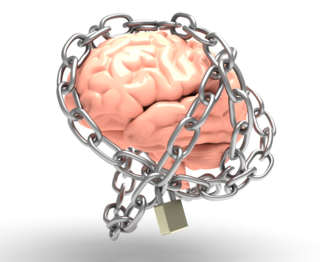Health
Mental Health of a Population During a Pandemic
The virus, the lockdowns, and the crushed economy all have a toll.
Posted September 30, 2020

SARS CoV-2 jumped from its animal host into the human population 10 months ago, and since then the world has undergone massive stress, with lockdowns, job loss, fear of infection, and many excess deaths. The elderly were isolated, visiting to assisted living and hospitals cut off, and funerals delayed for months. Parents tried to juggle jobs and homeschooling young children. All of this seems like a potent recipe for substance abuse and other mental health problems.
A systemic review of the research about the mental health costs of quarantine and isolation notes "prevalent mental health problems among the affected individuals include depression, anxiety, mood disorders, psychological distress, posttraumatic stress disorder, insomnia, fear, stigmatization, low self-esteem, lack of self-control, and other adverse mental health outcomes.”
On the other hand, folks stressed to the max were suddenly taken off the hamster wheel, no longer overscheduled, running around taking kids to their five afterschool activities or finding time to take off work to drive loved ones into the city for medical appointments, which now could be done from the comfort of home. Schools were closed, so kids weren’t rushed out of bed early in the morning and packed off on the bus to class. For once, whole families quarantined together, and many people almost always knew where their loved ones were at all times.
What do we really know about the mental health cost of living in 2020? On a population level, these enormous changes can lead to some unexpected findings. In Japan, where the pandemic began just as the stressful school year commenced, the suicide rate dropped 13.5% from Feb to June 2020 compared to the same months in 2019. In countries from Australia to Ireland to Denmark, lockdown coincided with a stunning reduction in premature births (including a 90% decrease in Denmark). Though the reasons are unknown, the cause could be pregnant women getting more rest, experiencing less workplace and school stress, or not being exposed to the usual colds or flus.
Findings in the US seem more in line with what you might expect. In Montana, between May and August of 2020, the calls to the state suicide hotline rose 33%. Other US trends are troubling as well; alcohol sales have risen by more than 25%. National levels of suspected drug overdoses climbed 18%. A recent analysis of 500,000 urine drug tests by Millennium Health, a national laboratory service, also showed “an increase of 32% for nonprescribed fentanyl, 20% for methamphetamine, and 10% for cocaine from mid-March through May.”
A survey study done in JAMA found the prevalence of depression symptoms in 1470 participants was three-fold higher during the COVID-19 pandemic than prior surveys. Of course, with so much going on, it’s normal to experience the darker range of feelings; the other concrete data points of overdoses and calls to suicide hotlines are stronger evidence that there really is a heavy mental health cost to the pandemic, from both the effects of the virus itself and the measures used to control it.
Mitigating the effects of the virus, then, requires more than just focusing on handwashing and antiviral medicines and vaccines. Getting mental health treatment to the right people at the right time now requires innovation. In the state of Massachusetts, the sudden establishment of wide networks of telehealth has made help for many (with internet access) paradoxically simpler than it was before. Partial hospital programs and intensive outpatient programs from all over the state are taking patients online, who don’t have to drive into busy cities and find parking to get care. The specialty psychiatric clinics for specific cultures in their home languages in Boston, Cambridge, and Providence, RI, are now easier to reach than ever. Online Alcoholics Anonymous meetings are running 24/7. Other patients, without internet or smartphone access, are relegated to phone calls or the now limited numbers of in-person outpatient programs, but controlling the virus in the traditional ways will make these programs as safe they possibly can be.
Opening up the economy and reducing isolation as much as possible is a delicate line to walk during a pandemic. Even with open movie theaters, a population wanting to protect the vulnerable from the virus isn’t rushing back in to fill every seat for a blockbuster. The best way out of the problems of the pandemic is to control the virus, and either through a large program of testing and tracing or the hoped-for vaccine. In the meantime, adaptations such as the use of masks in public, Telehealth visits, and online learning can help get the world back to normal while protecting the population from the virus better, and low case counts with a strong testing program mean it’s safer for adults and children who need in-person services to get them. We’re all in this together.
Copyright Emily Deans, MD


